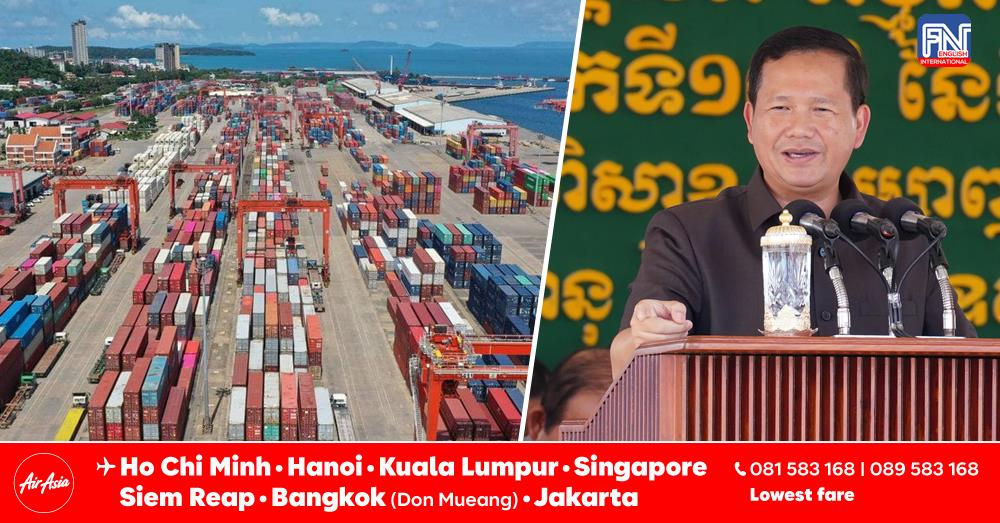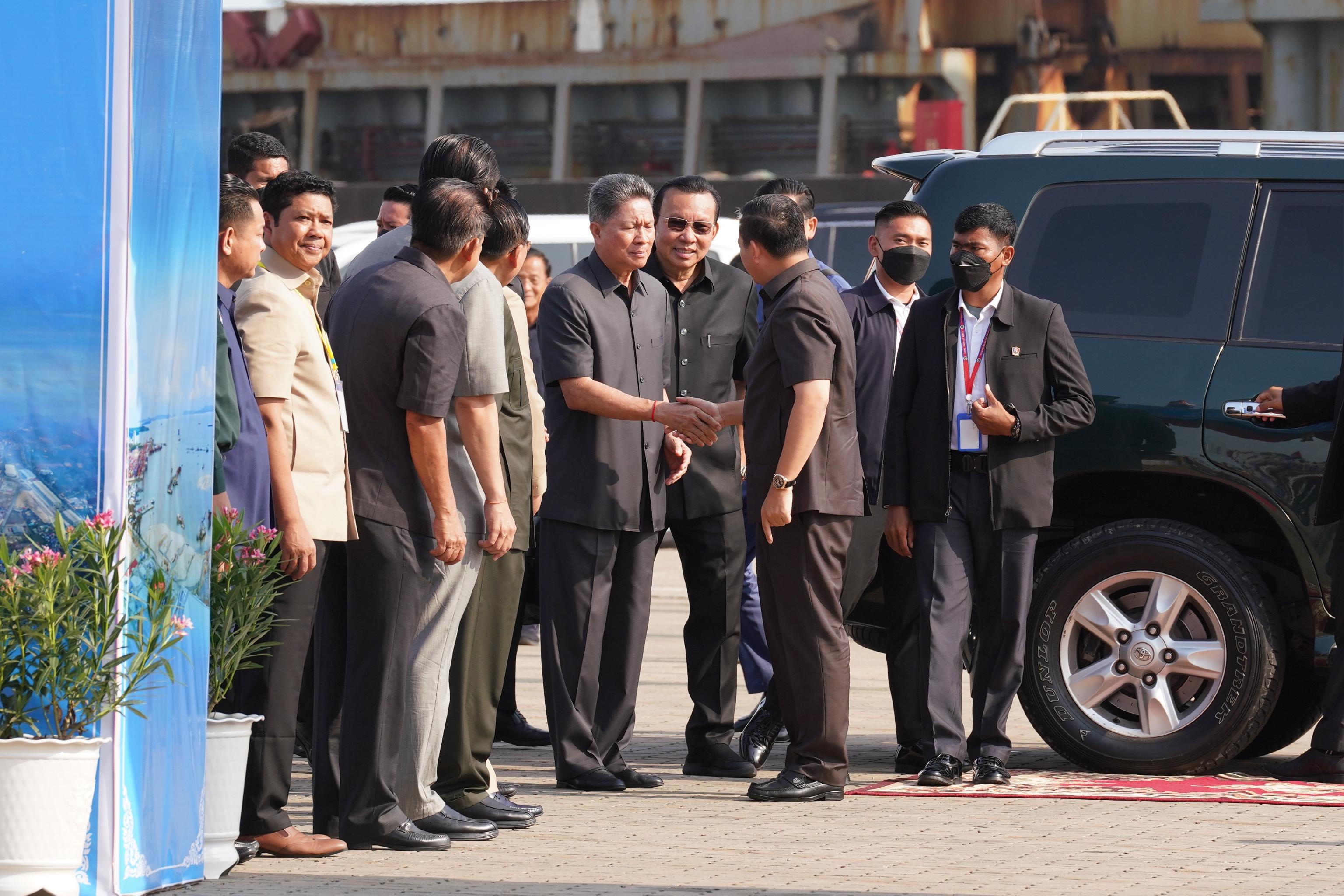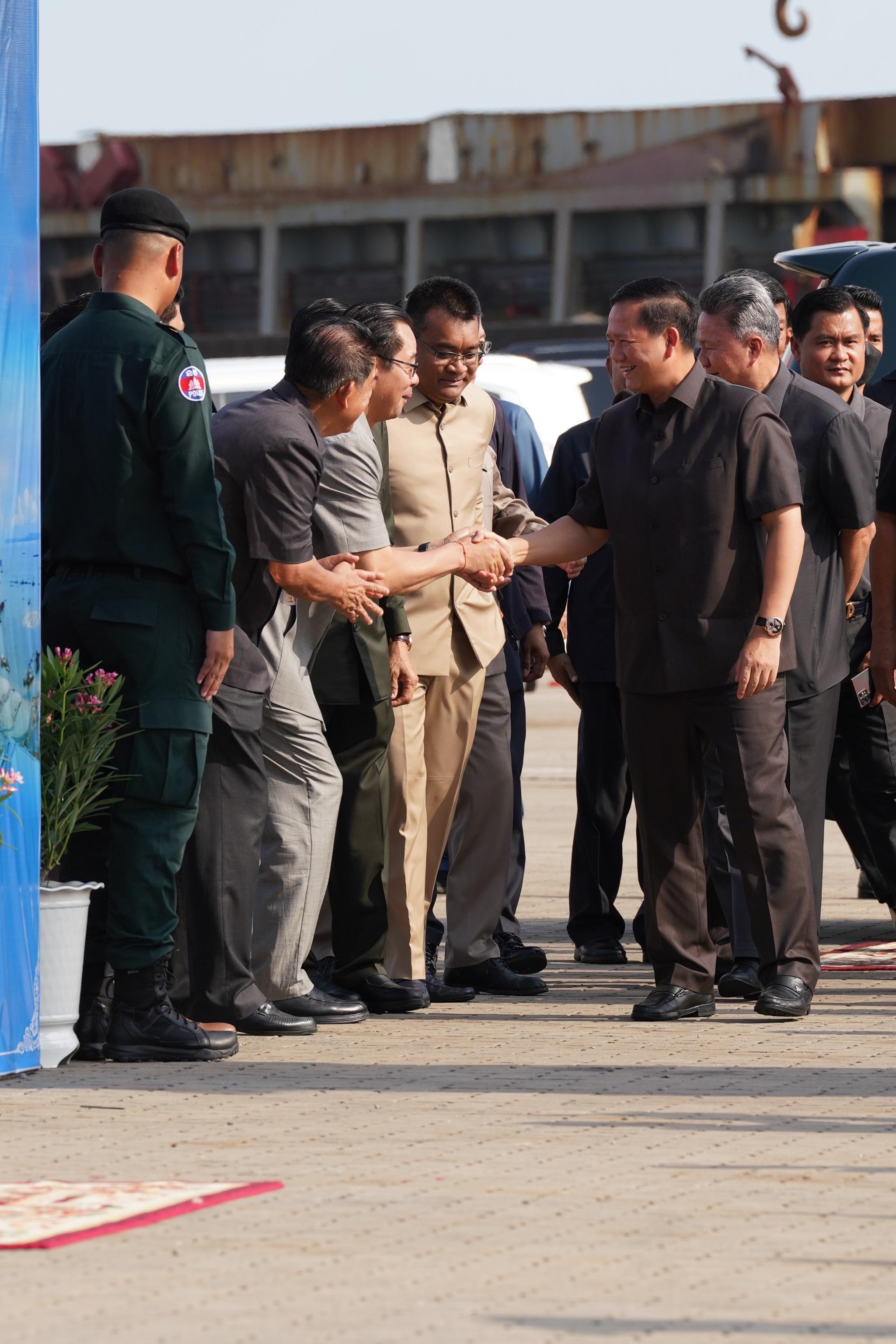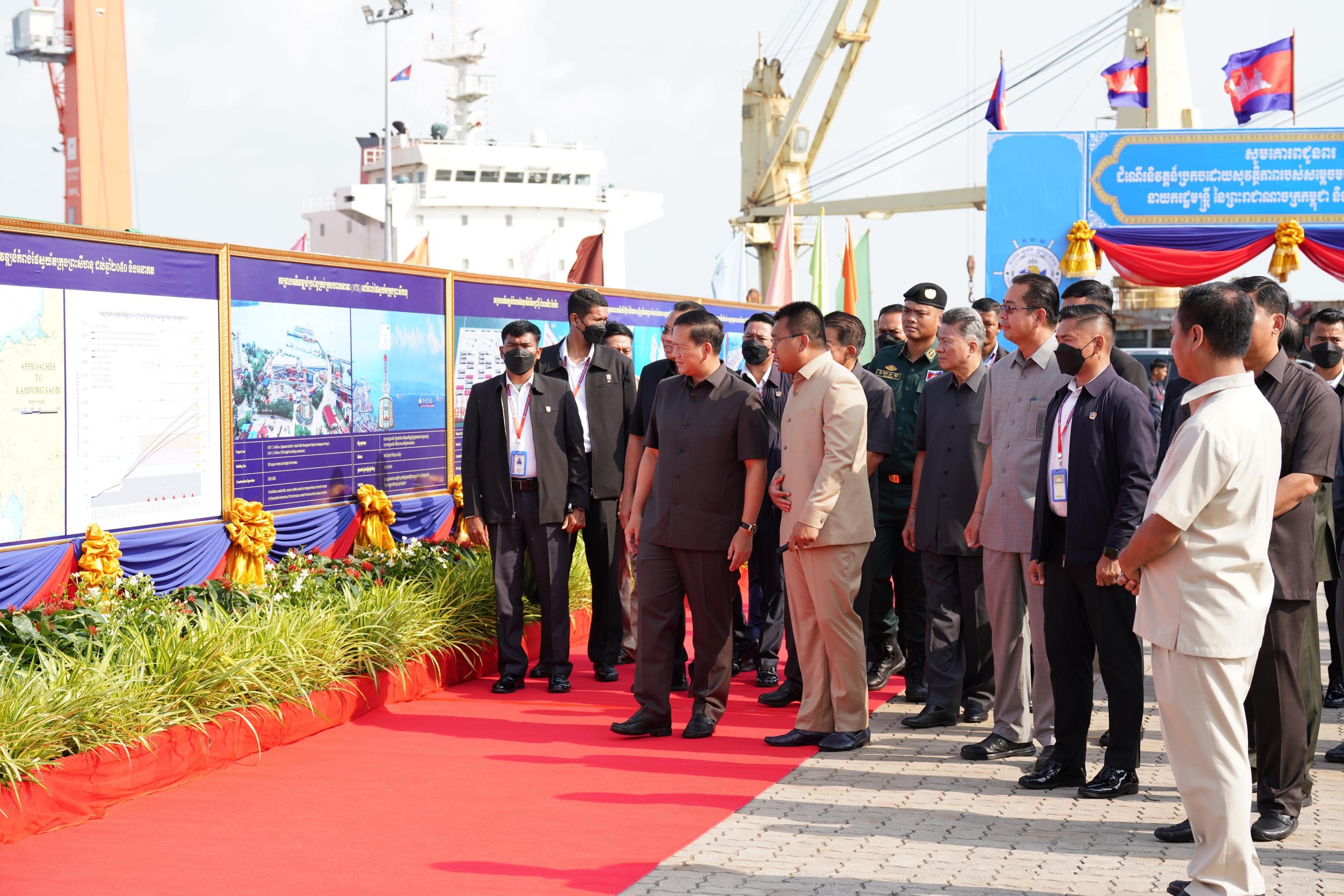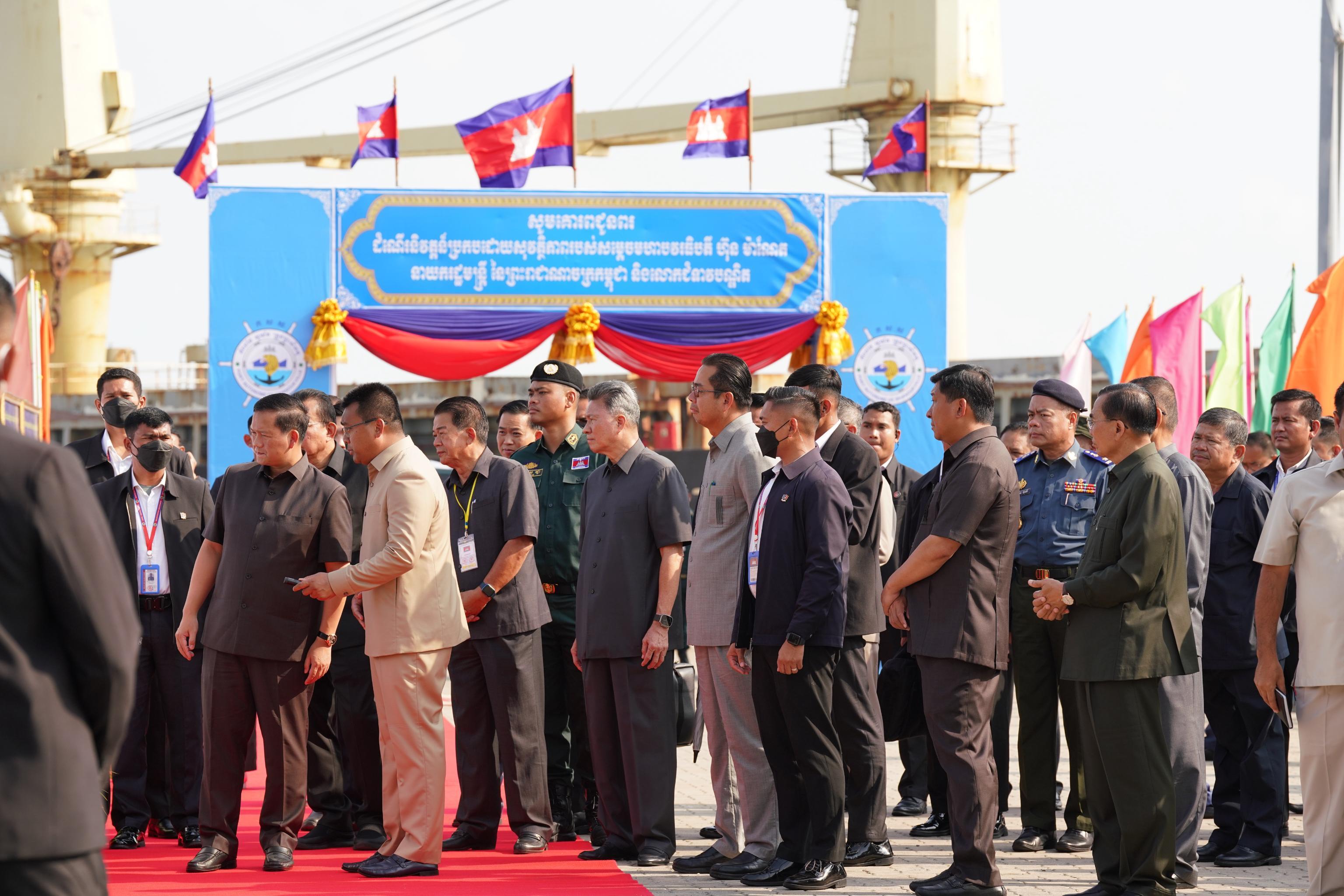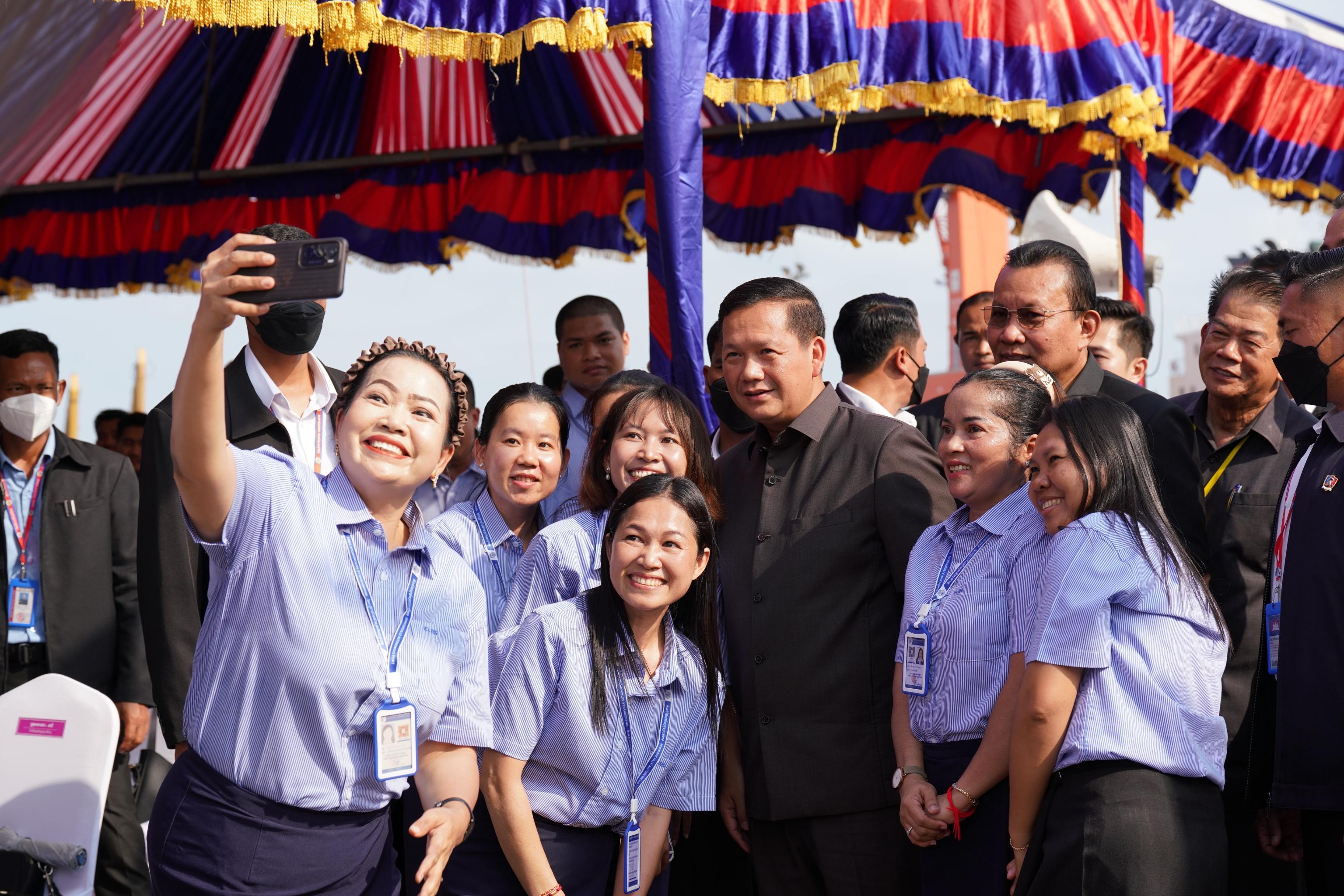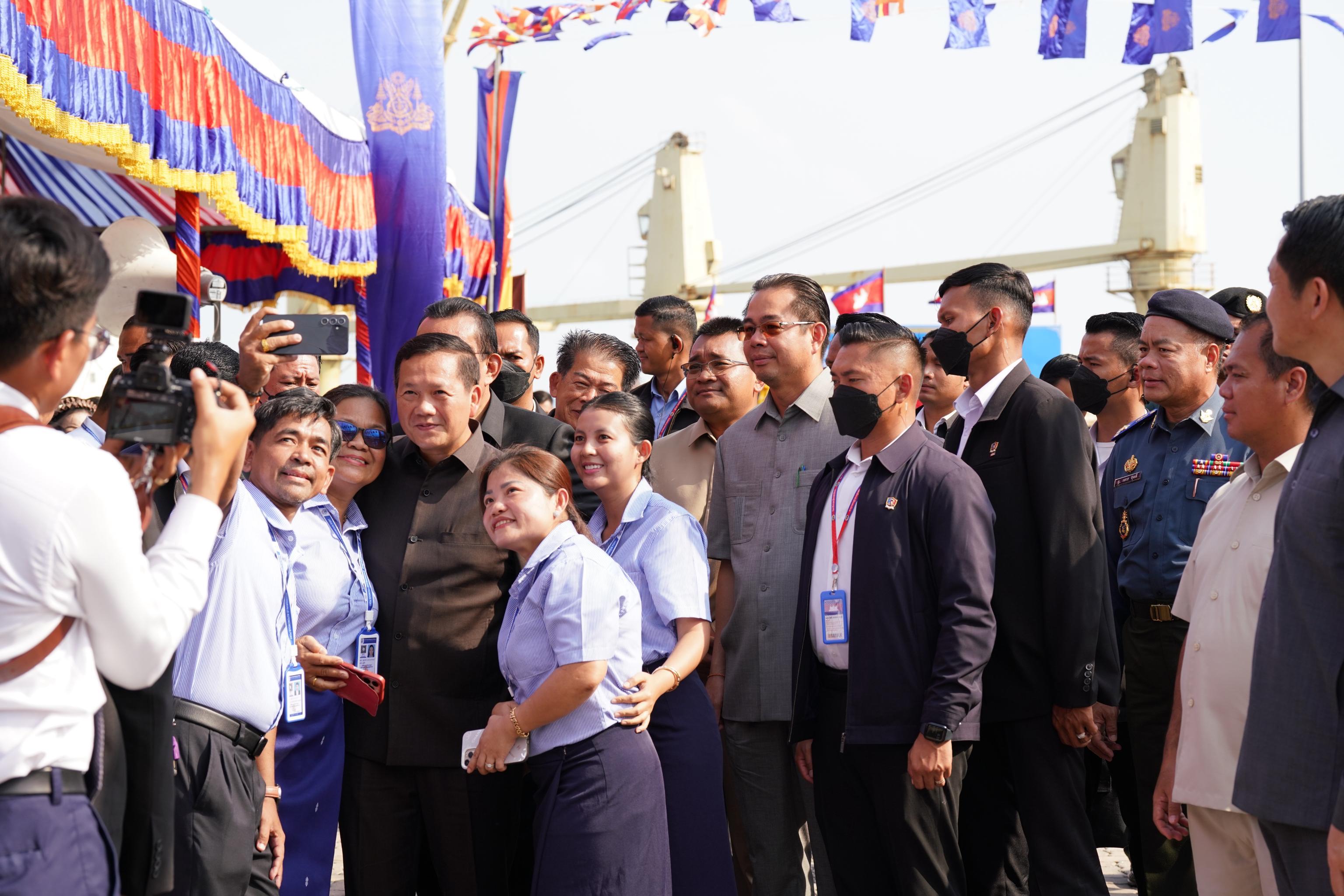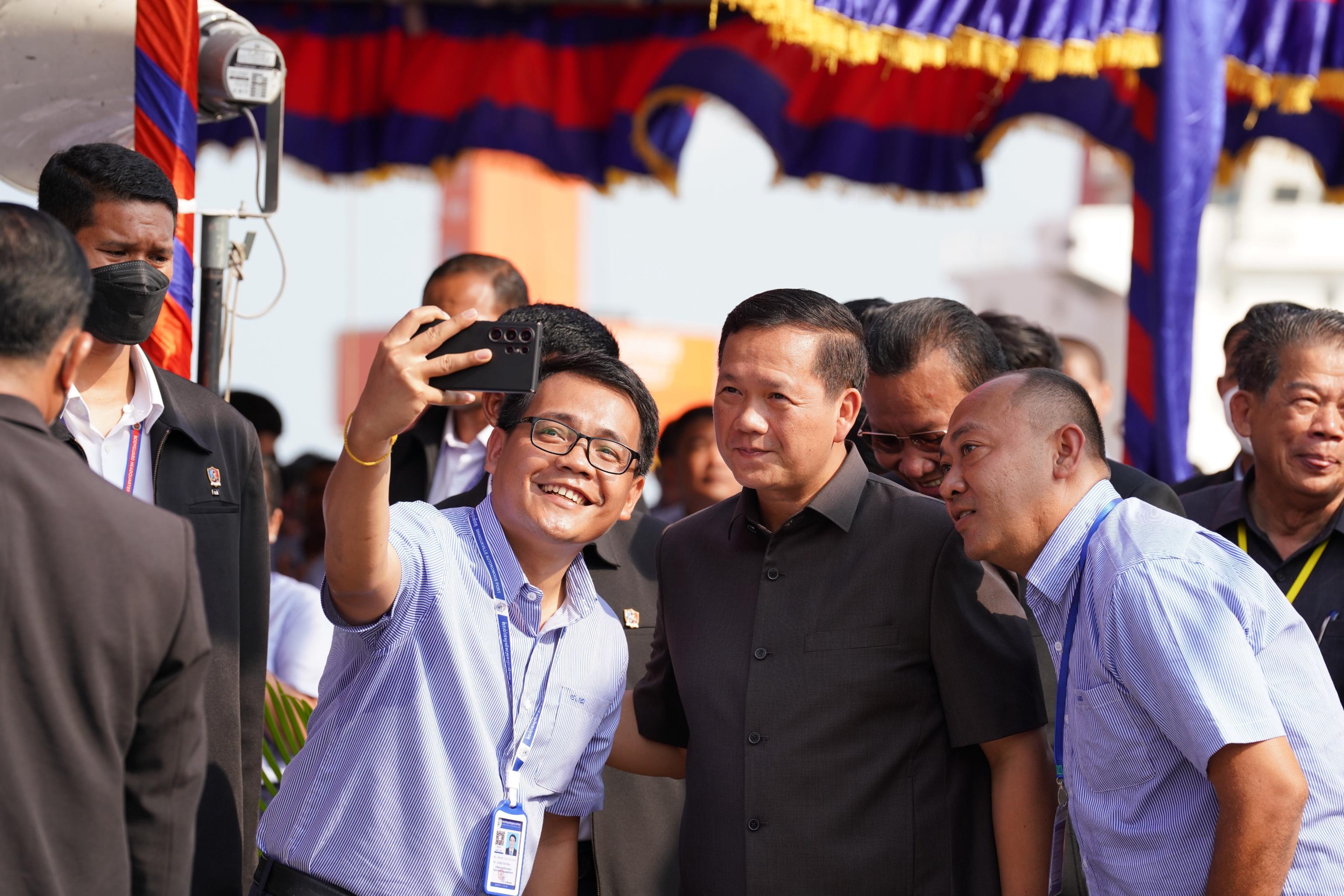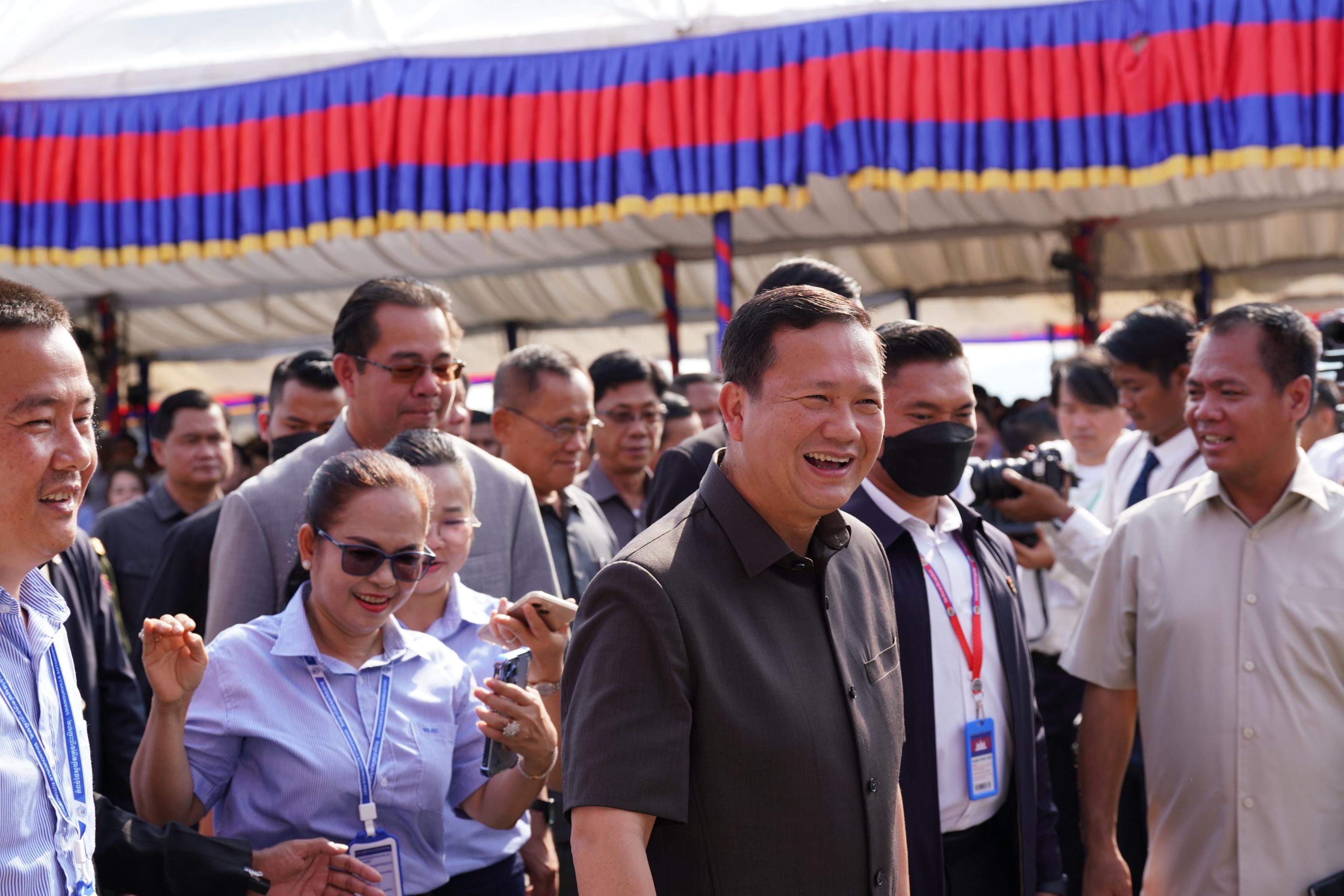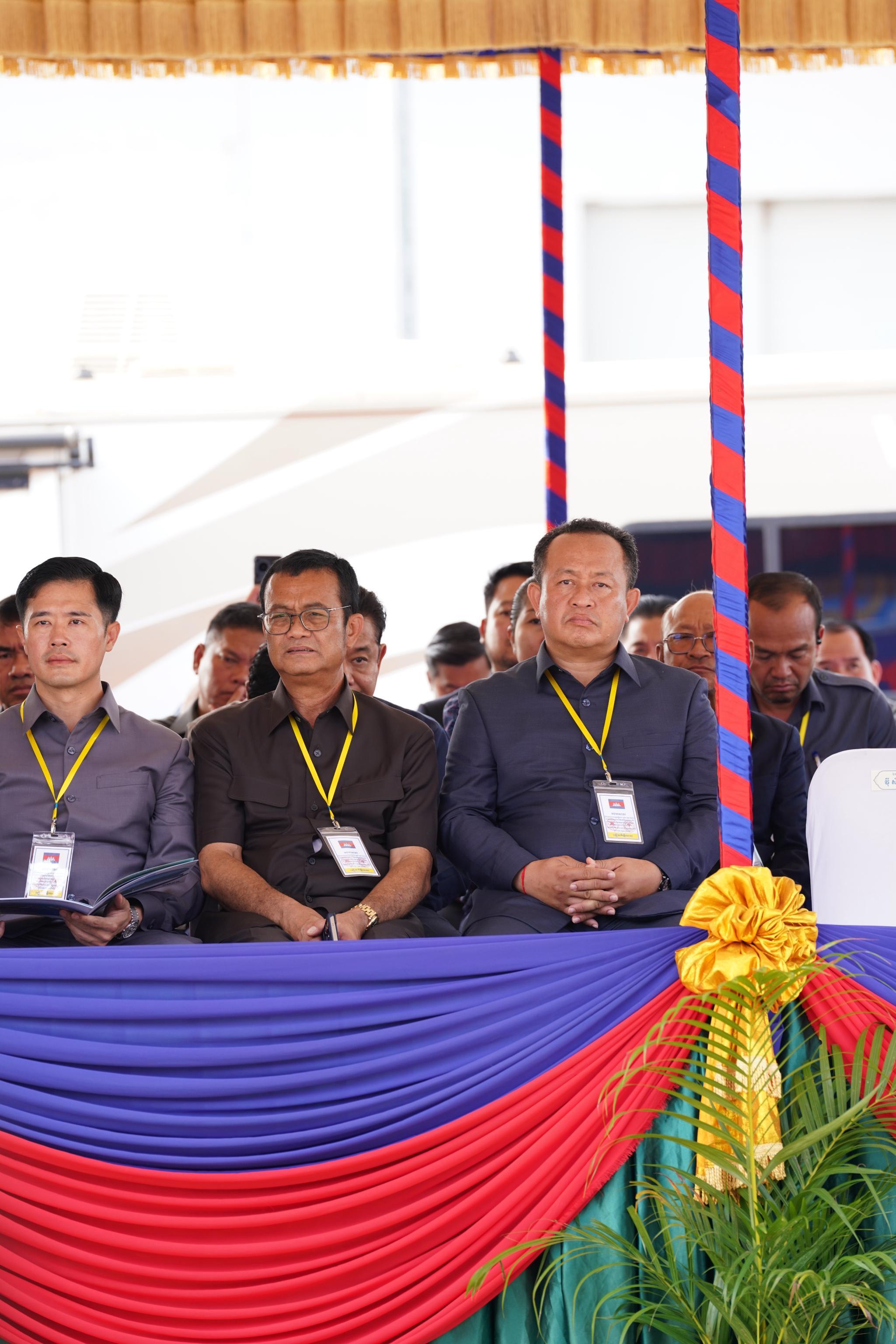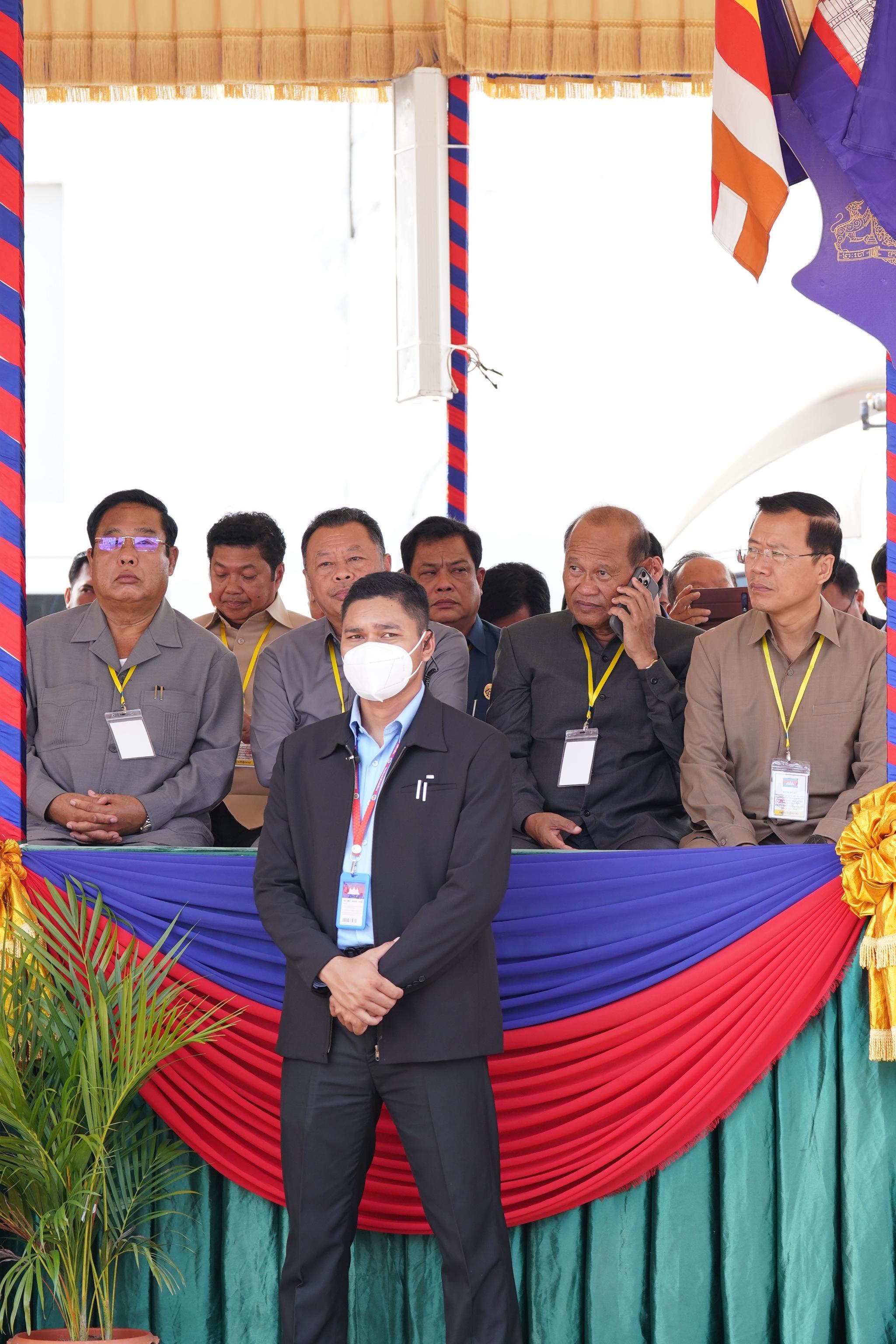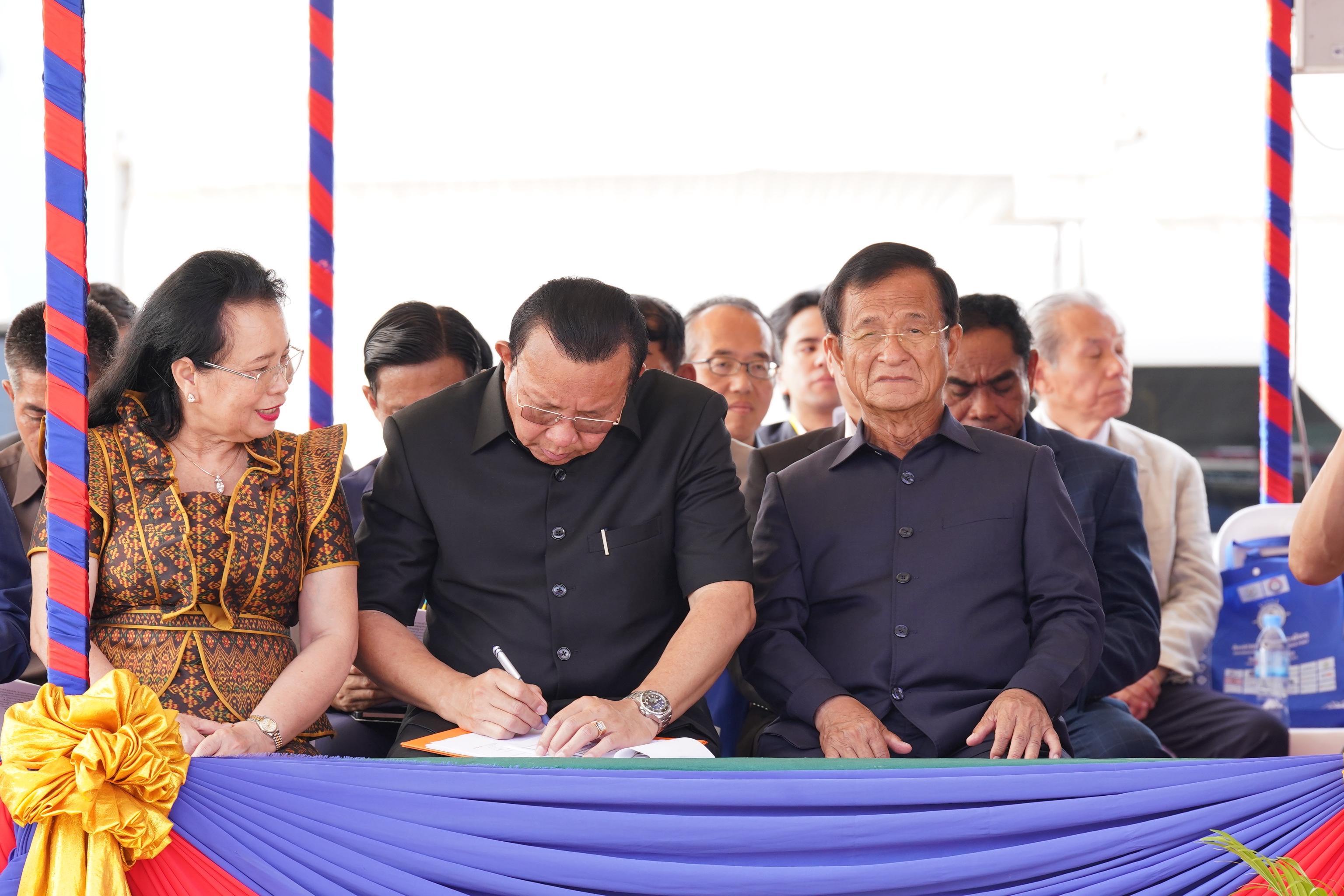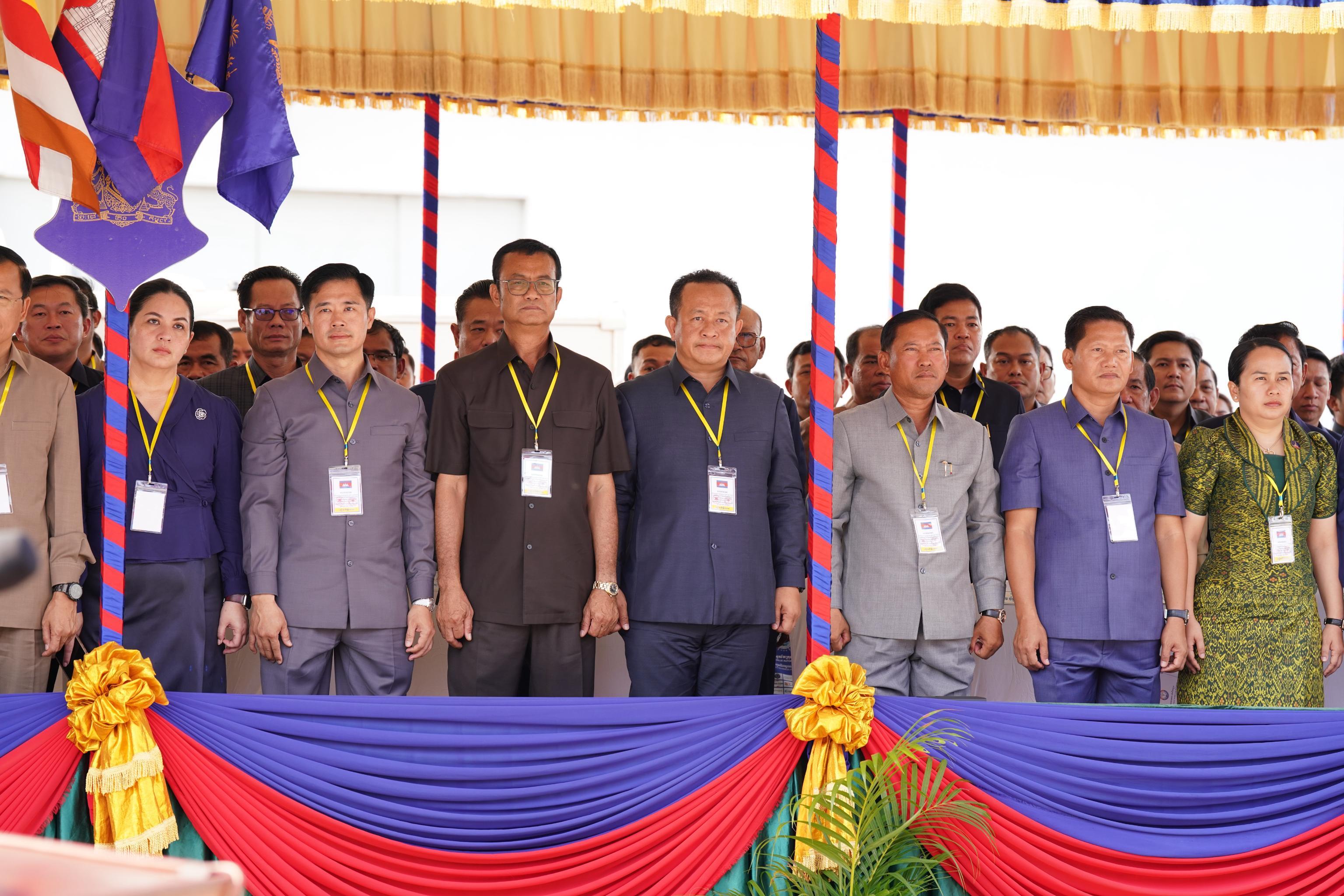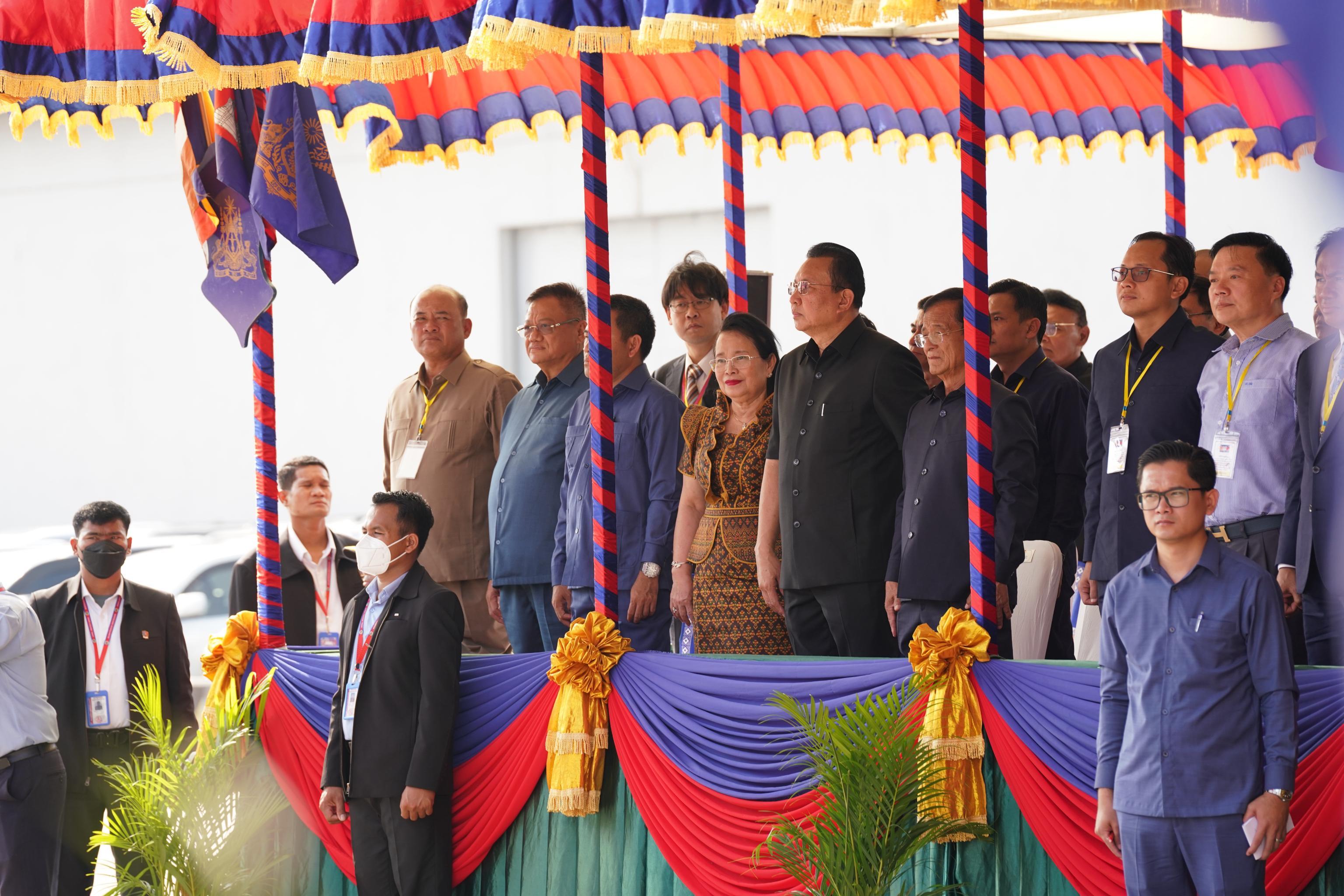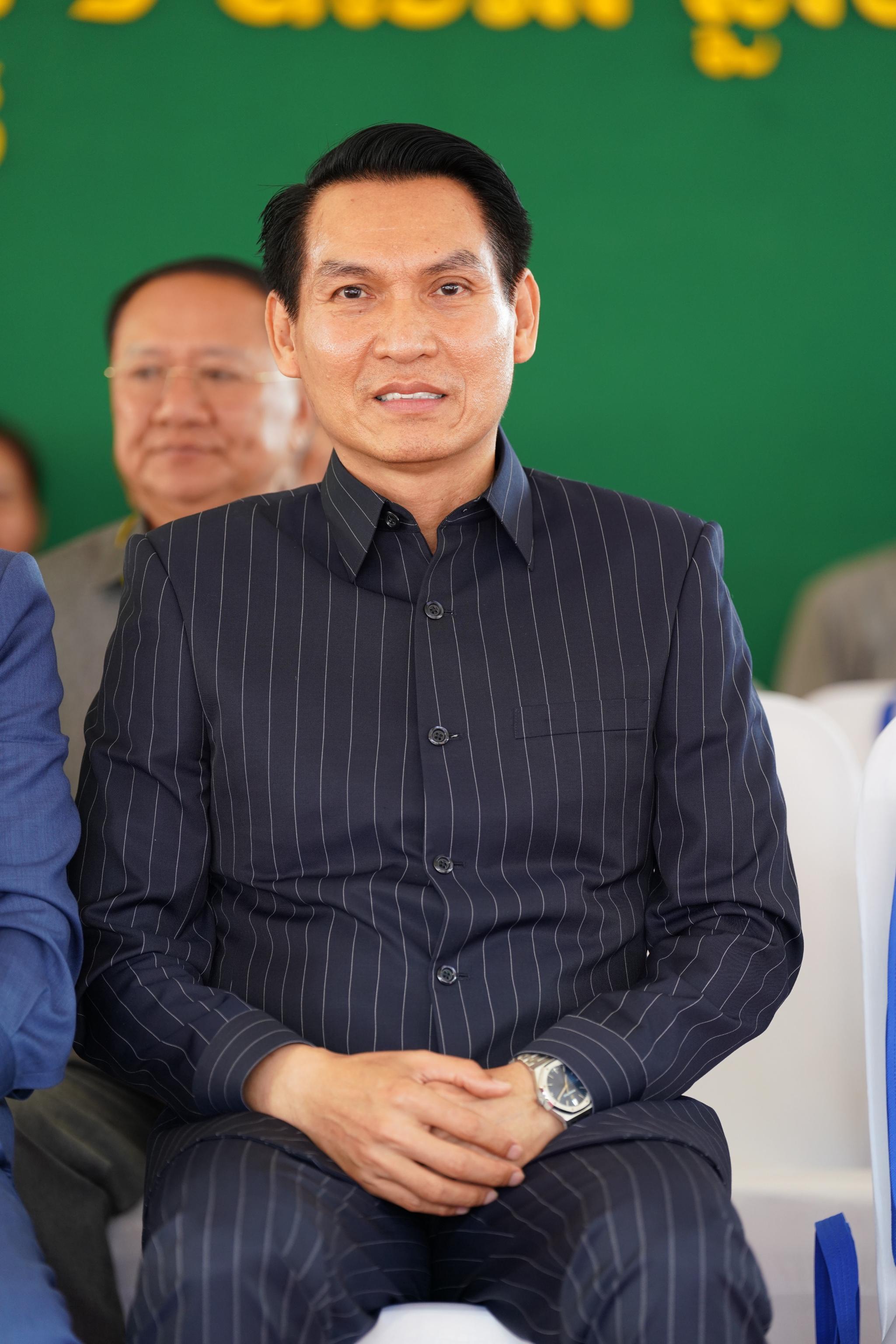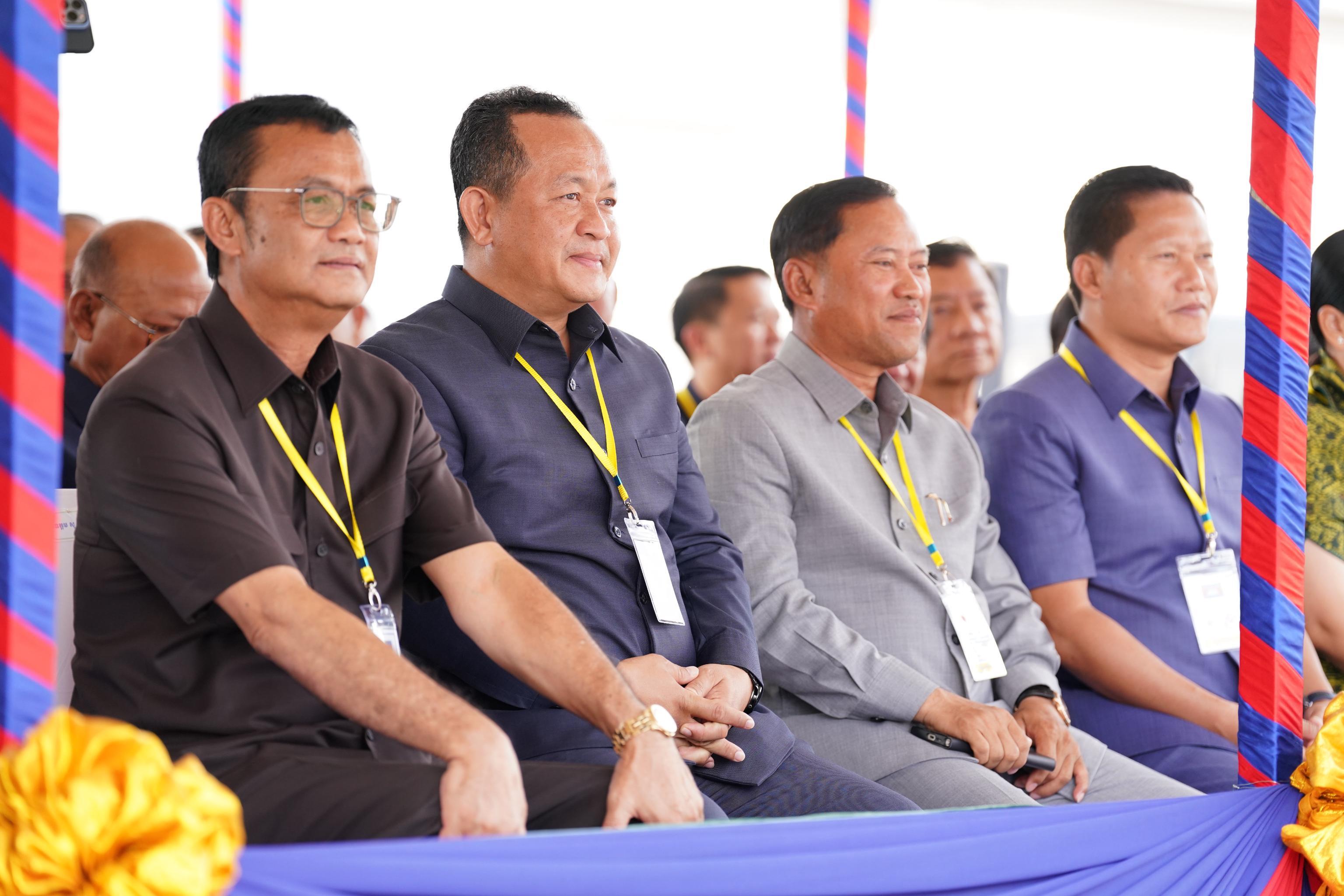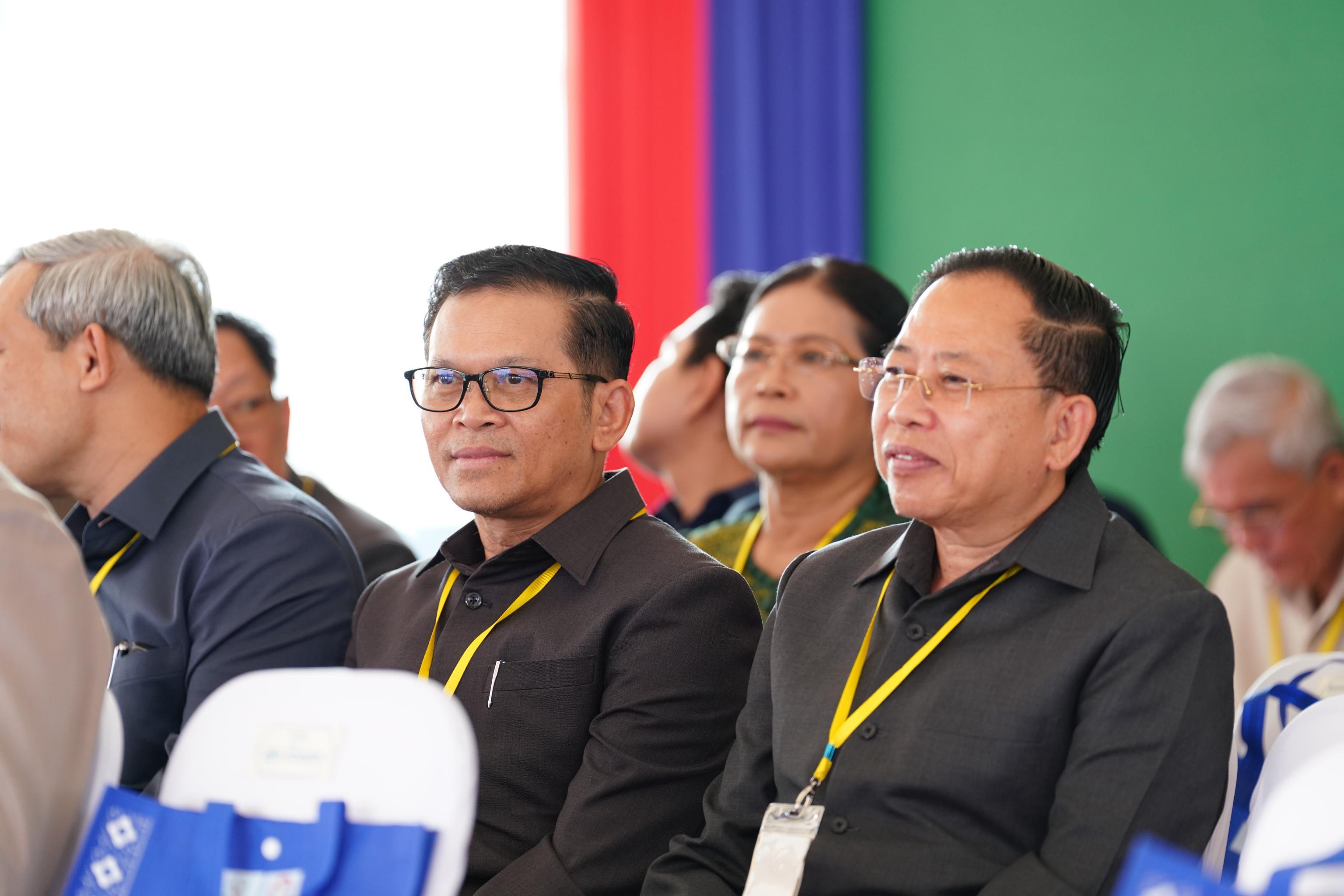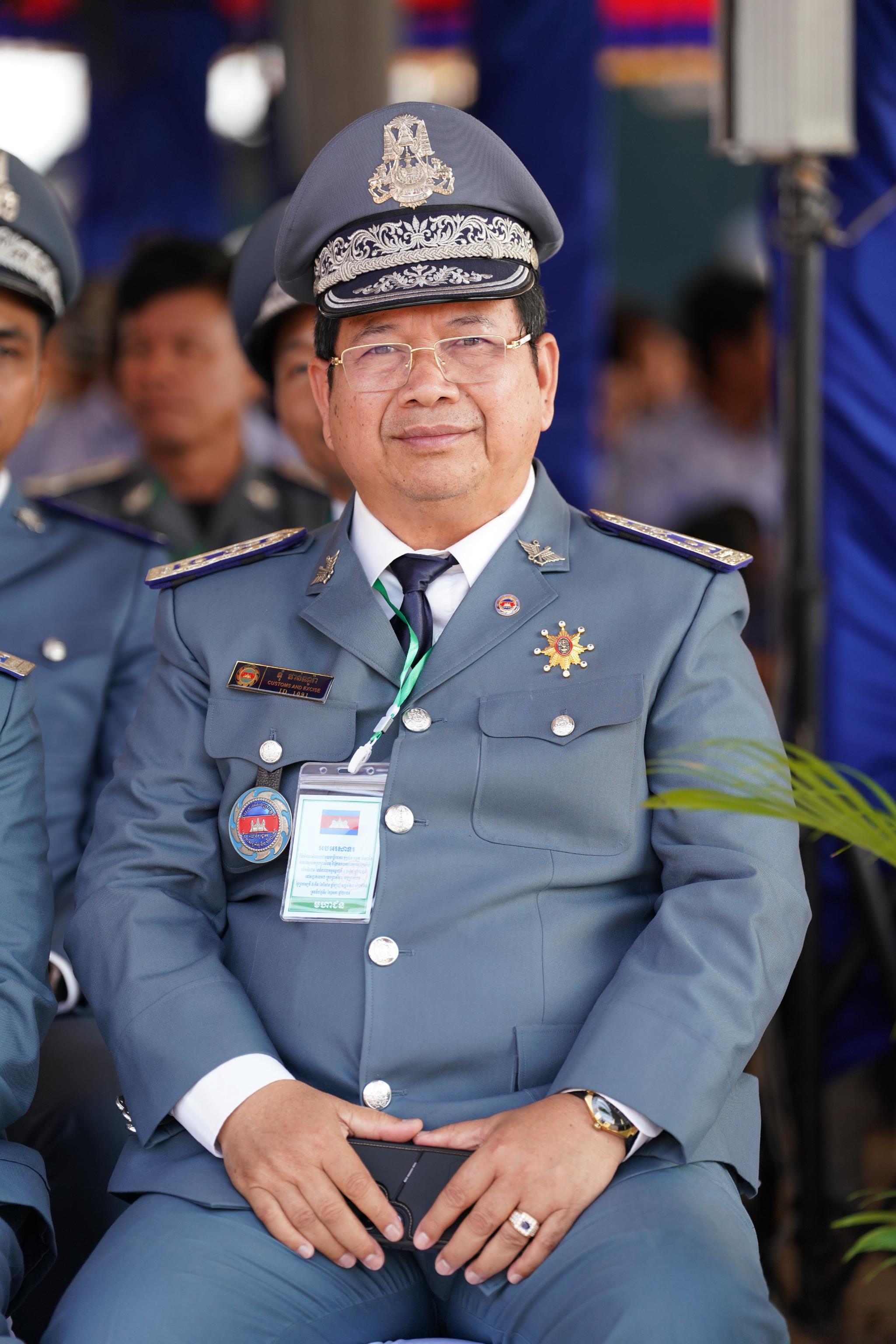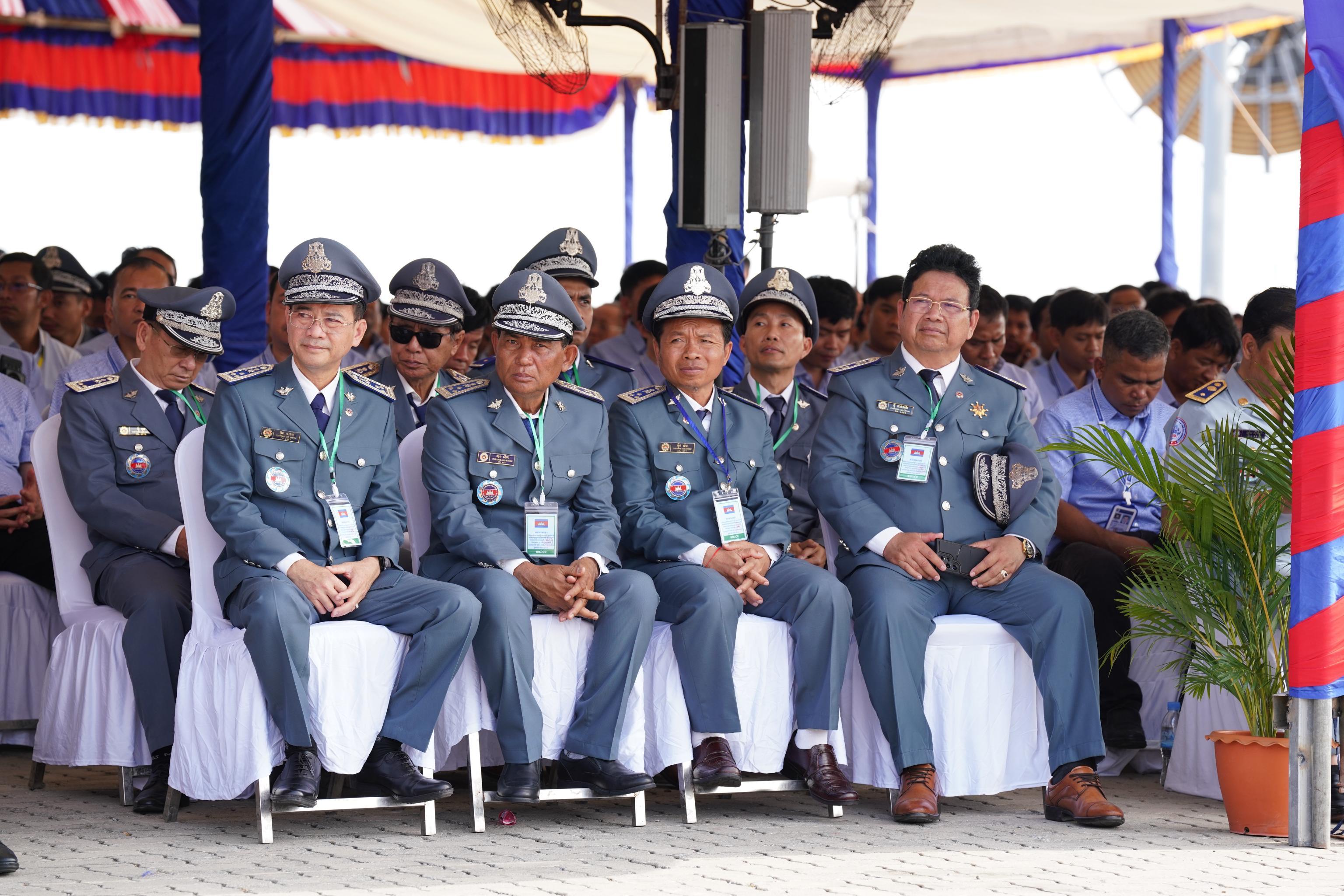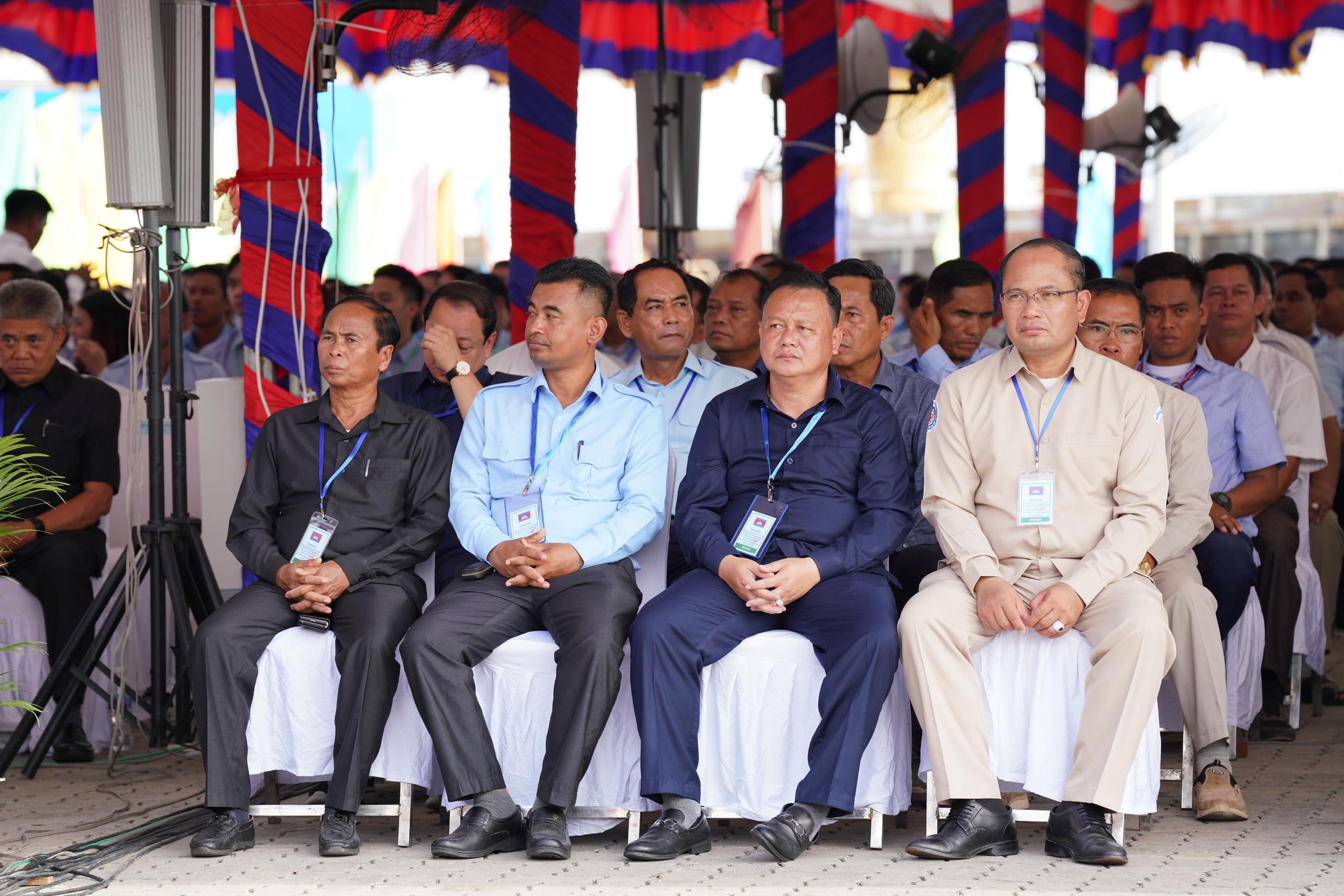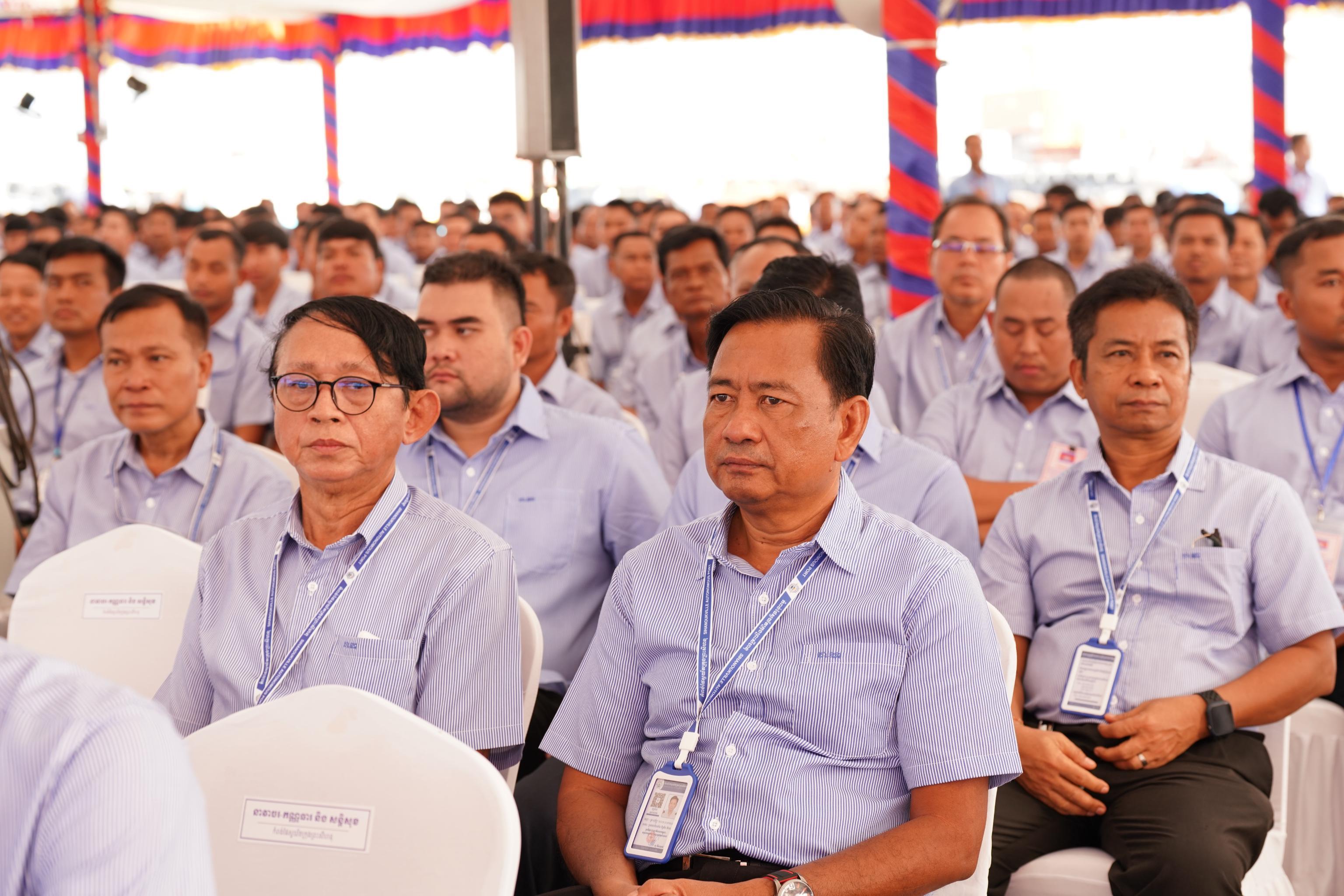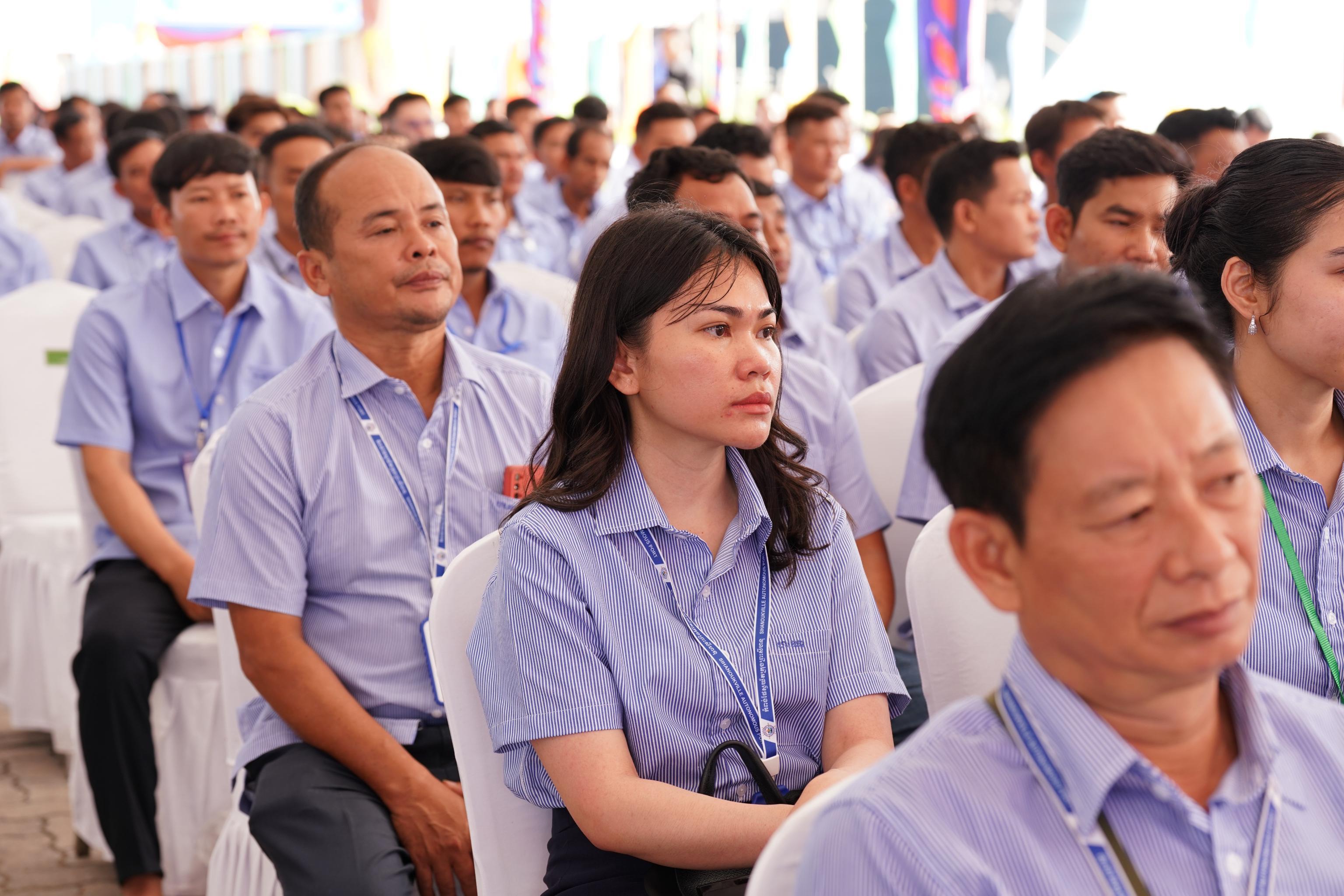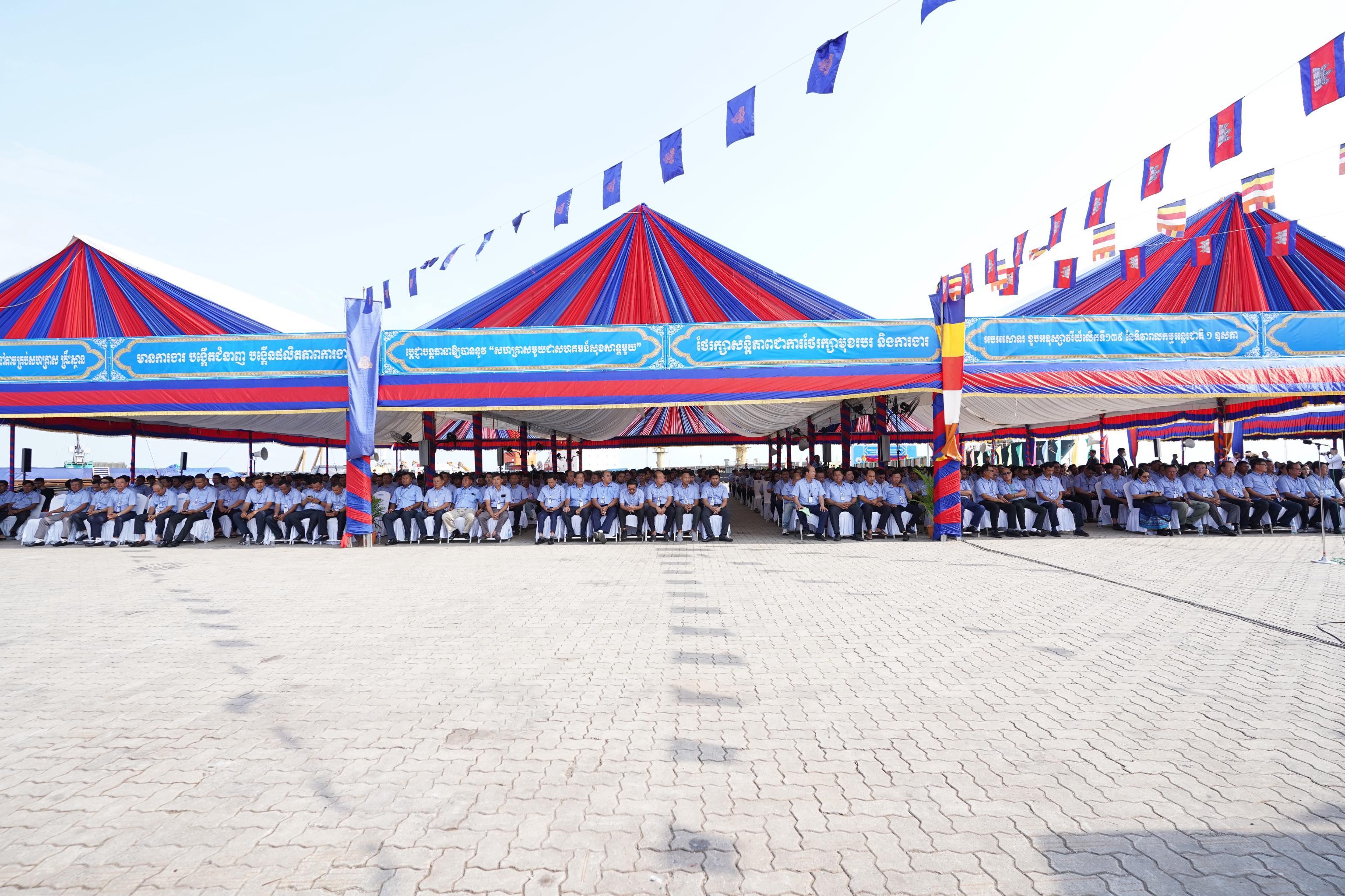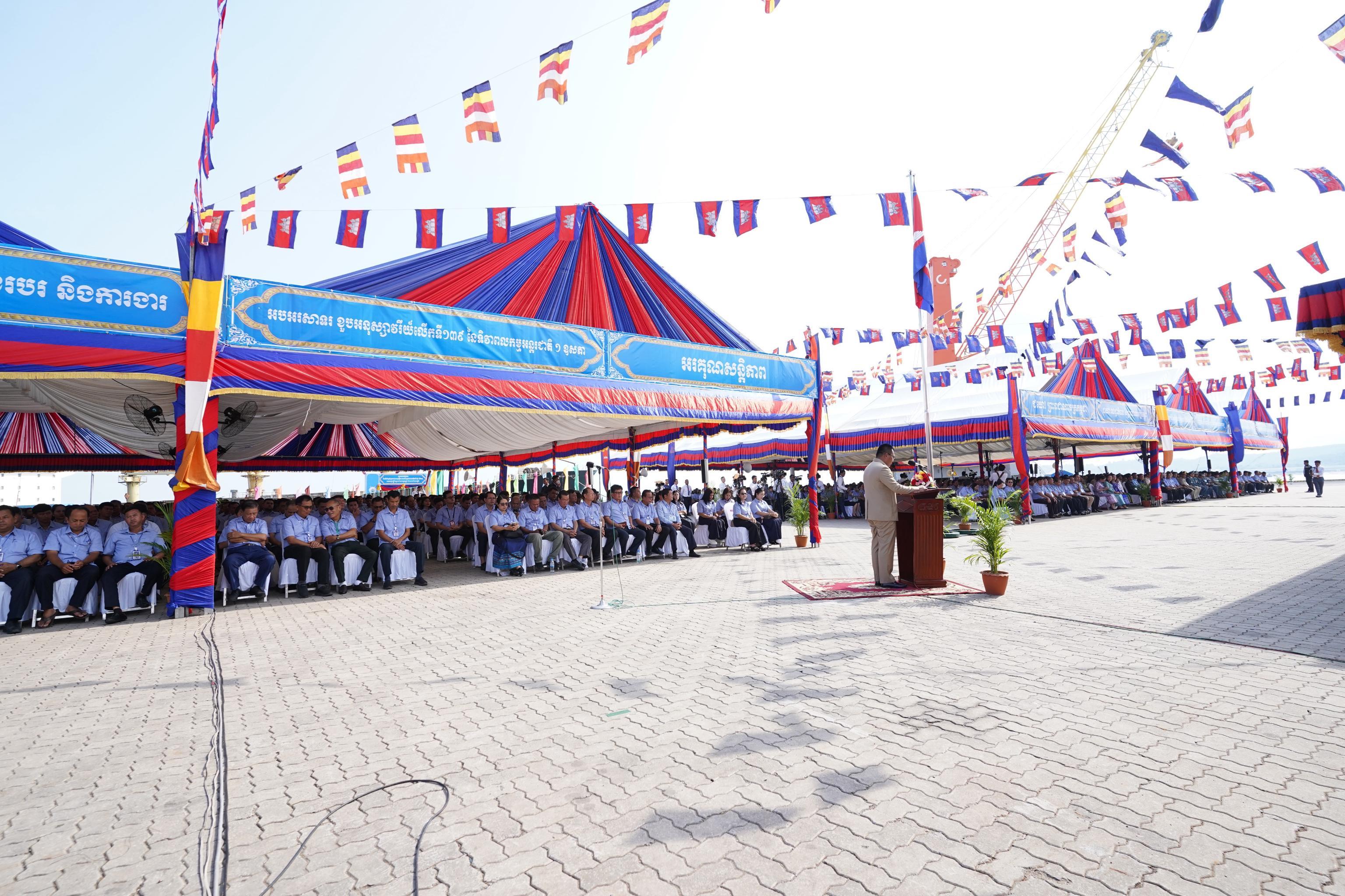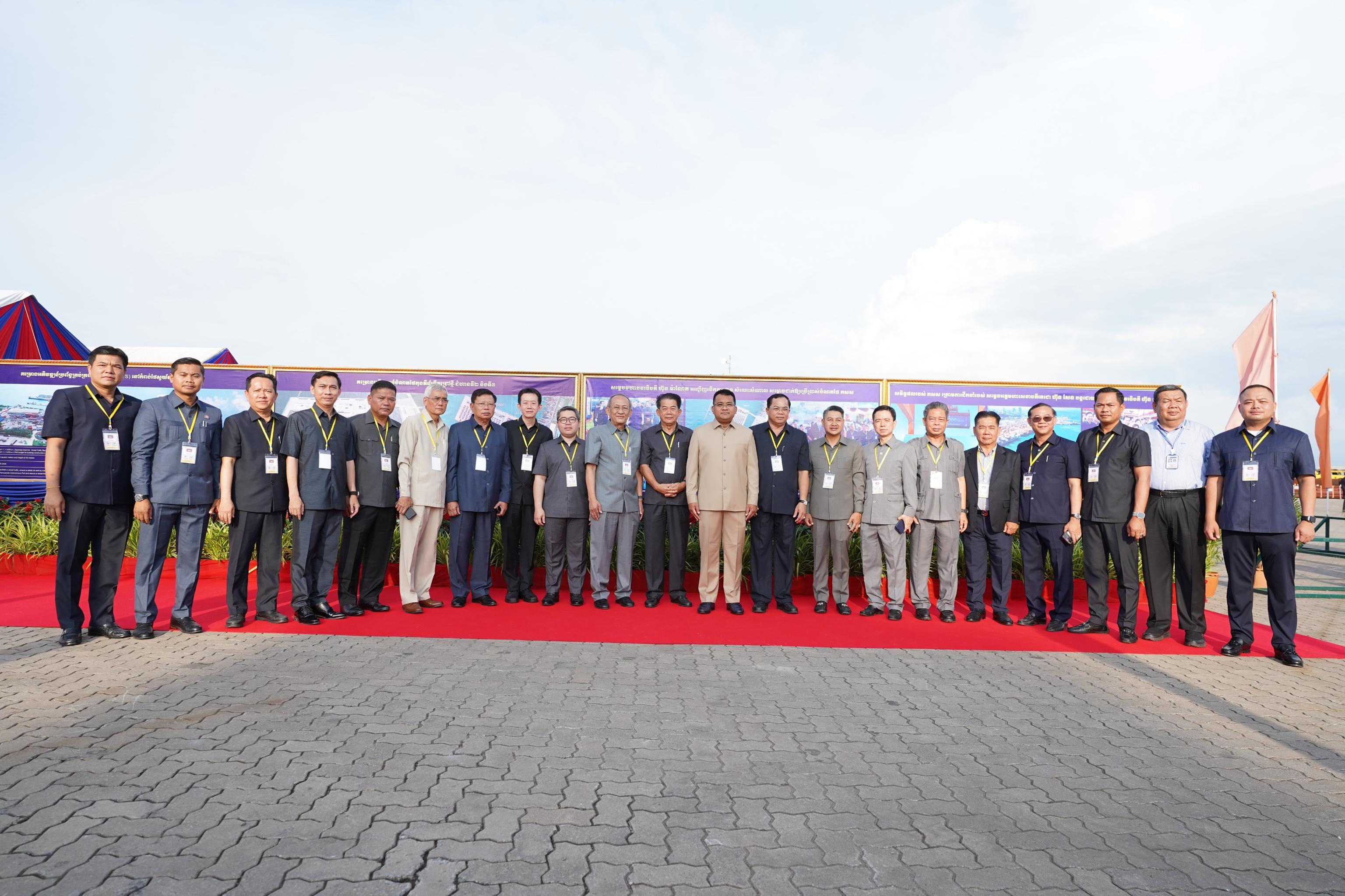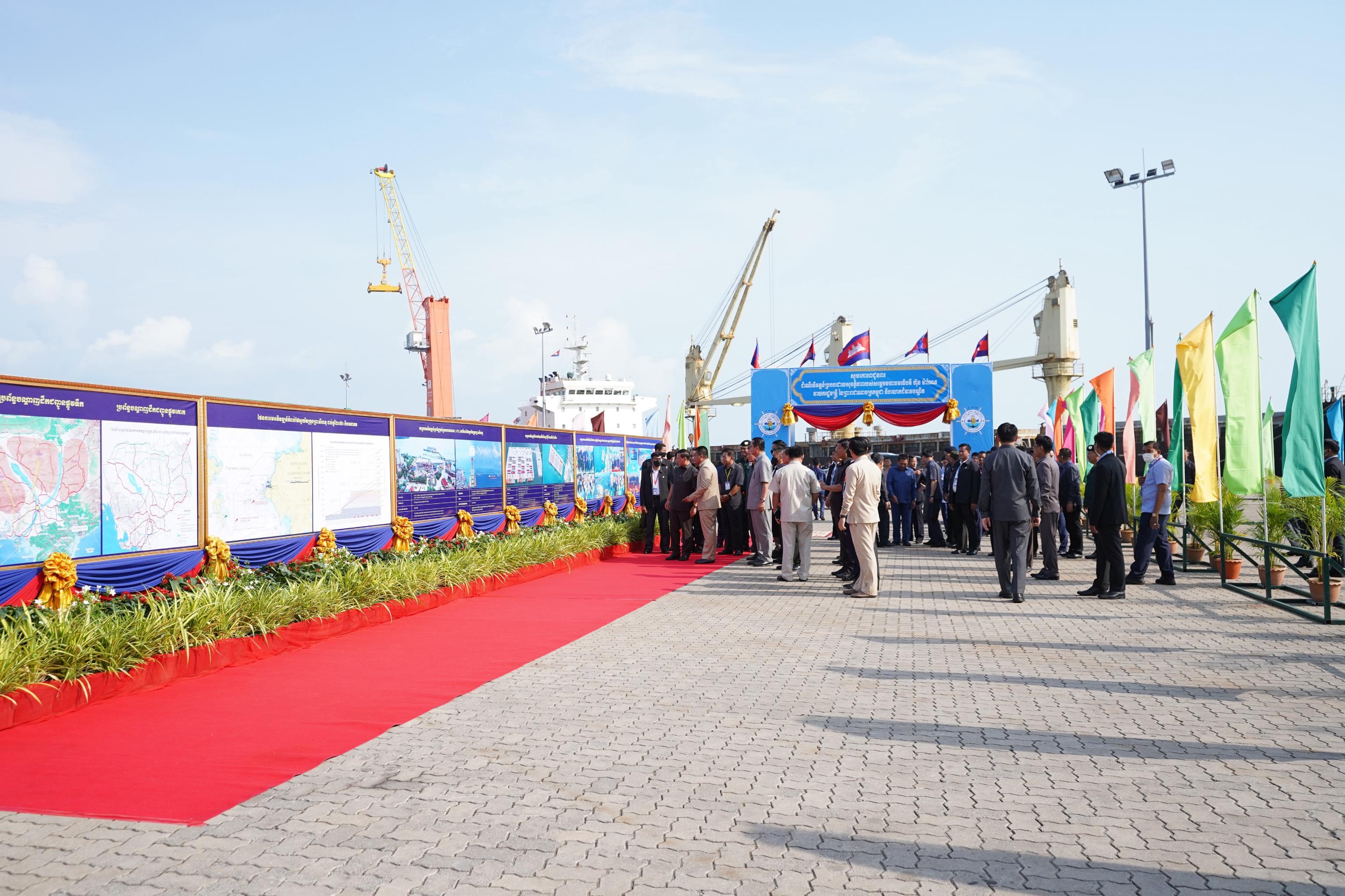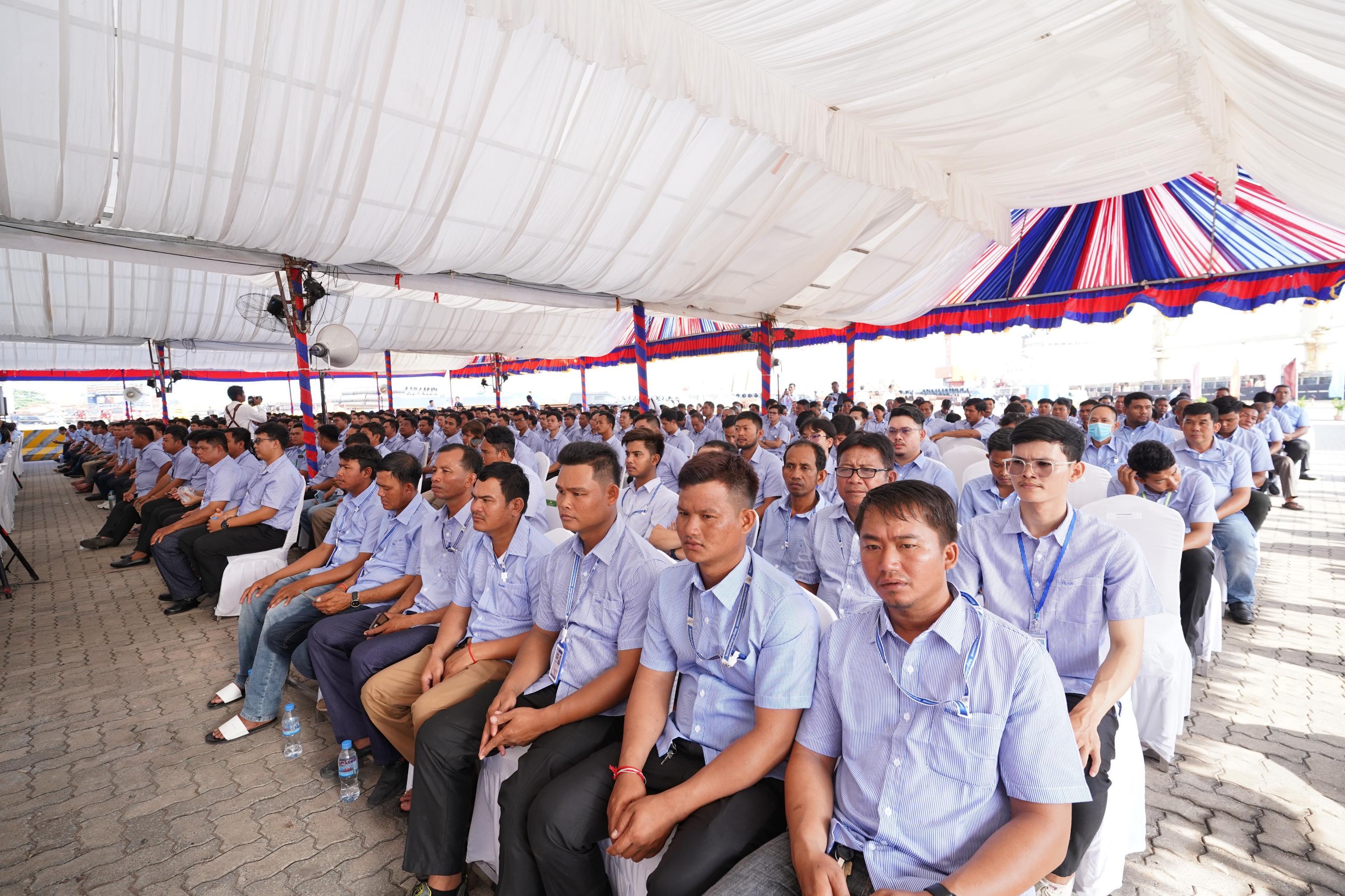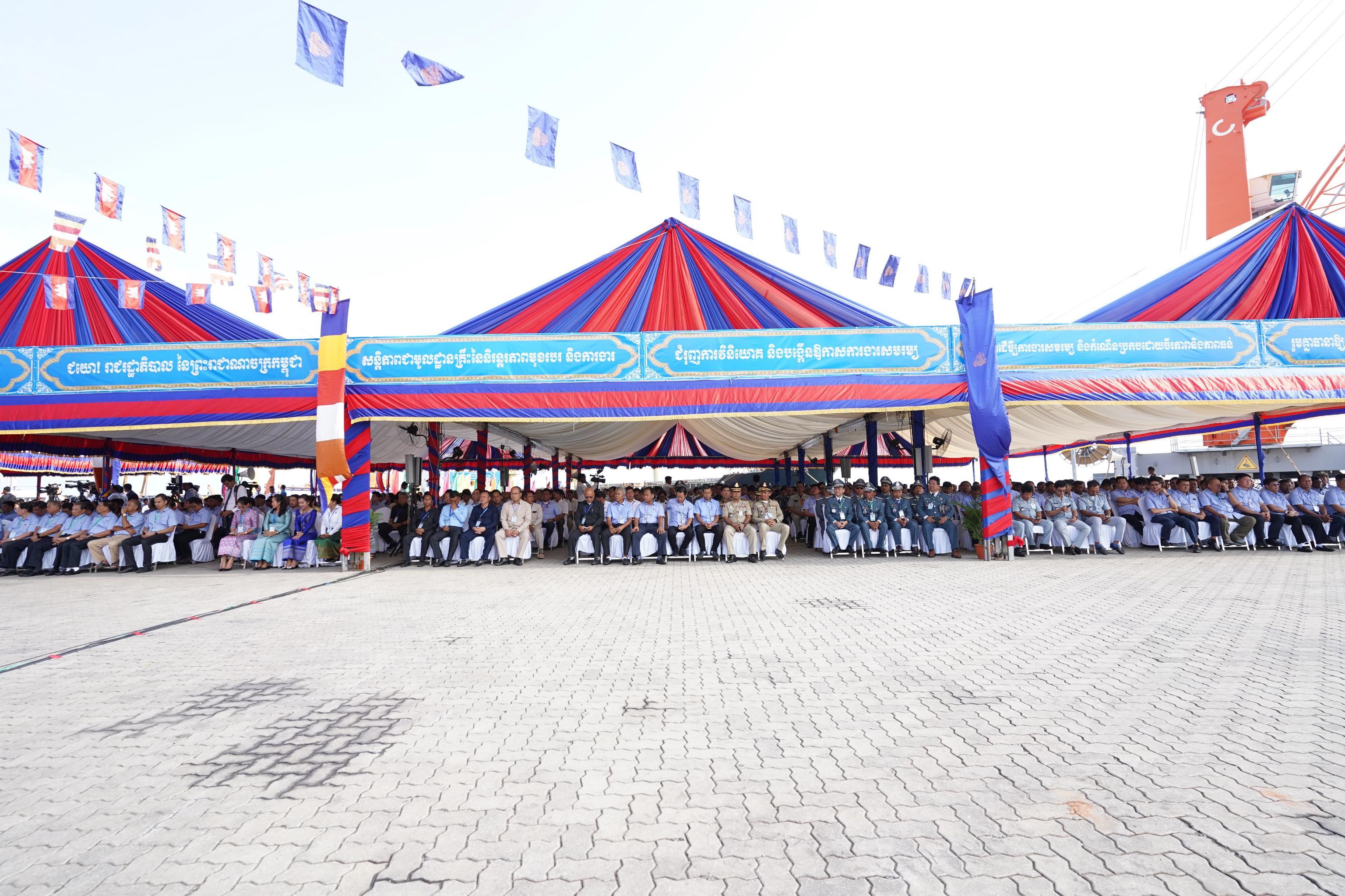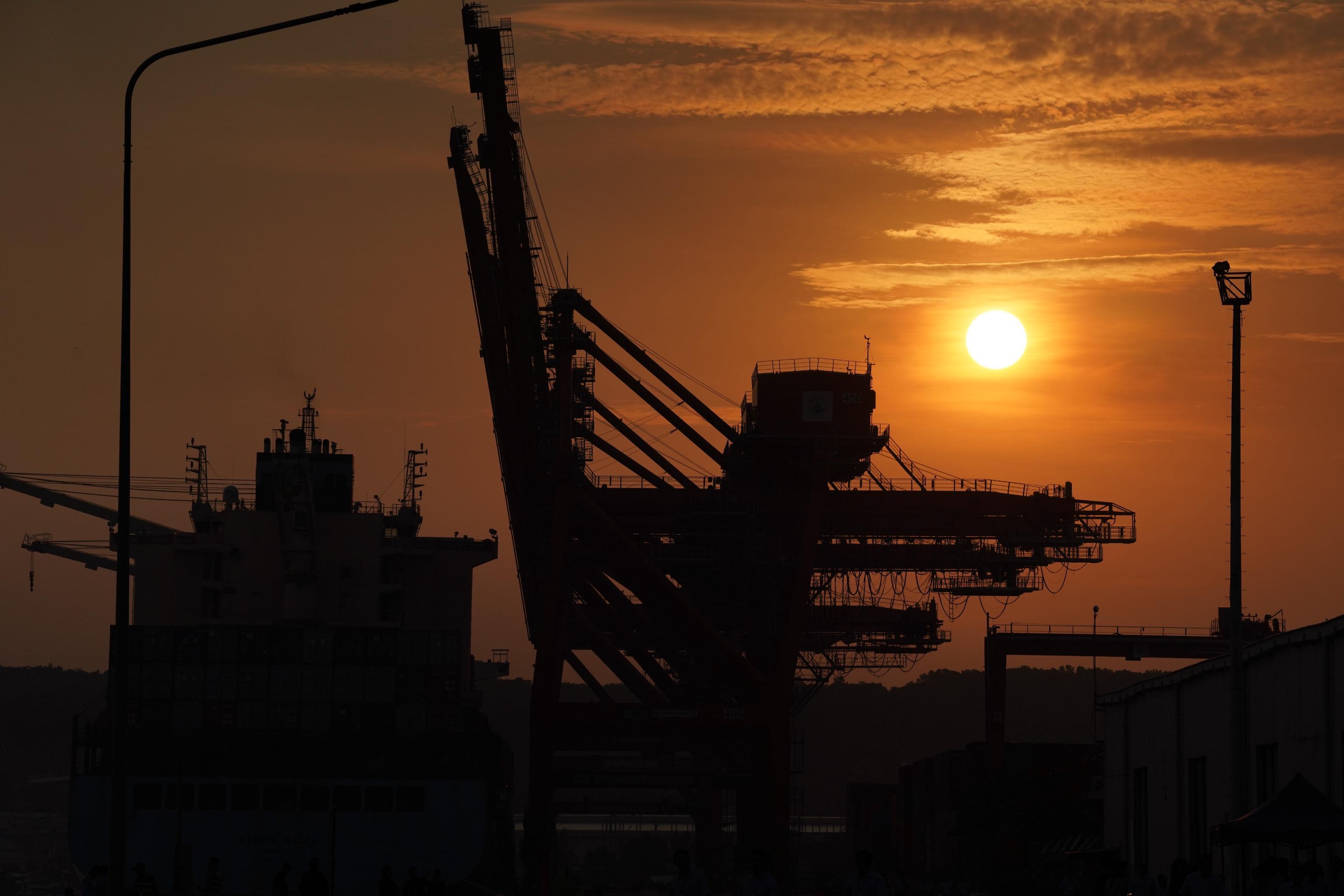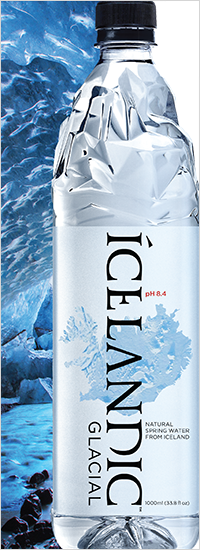(Sihanoukville): Cambodian Prime Minister Hun Manet affirmed that Cambodia is consistently modernising the Sihanoukville Autonomous Port in response to the growth in trade activities. He added that investing in the port represents a strategic approach of “using money to make money.”
The premier spoke on Thursday (May 1) during his meeting with civil servants, staff, and workers of the Sihanoukville Autonomous Port.
“When I travel abroad to engage with foreign investors, I observe that other foreign leaders are doing the same — they offer incentive policies. Therefore, whether in discussions with the Council for the Development of Cambodia (CDC) or with private enterprises, we must continuously assess which policies enhance competitiveness and which have become outdated or ineffective. It is crucial that we protect our competitive edge, even in the face of challenges,” the premier underscored.
Samdech Thipadei continued, “Regarding this port […] if we remain stagnant, we will fall behind, as others continue to progress rapidly. Therefore, we must be committed to ongoing innovation and modernisation — of our infrastructure, operational systems, and most importantly, the development of human capital — to ensure that Cambodia remains competitive and maintains its rightful place in the global economy and regional integration.”
On the occasion, Samdech Thipadei noted that the Sihanoukville Autonomous Port is Cambodia’s only deep-sea port — not just for the country, but also serving the broader region — capable of accommodating international vessels navigating both regional and global waters. This allows Cambodian goods to be exported directly, without depending on transshipment via neighbouring ports such as Singapore, where shipping costs are higher.
The Sihanoukville Autonomous Port is Cambodia’s principal deep-sea port, covering an operational area of approximately 125 hectares. Located in Kampong Som Bay, it is naturally suited for maritime logistics due to its deep waters, protection from surrounding islands that act as wind and wave barriers, and a geographical position that eliminates the need for regular dredging to maintain navigability.
Established in early 1956, the port has undergone several expansions. It currently operates eight berths equipped with modern cargo-handling facilities. Over the past five years, the volume of goods passing through the port has steadily increased.
=FRESH NEWS
